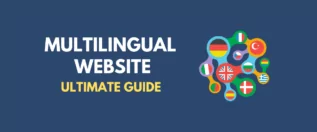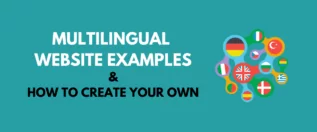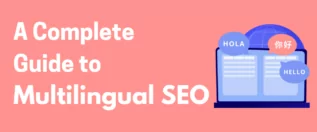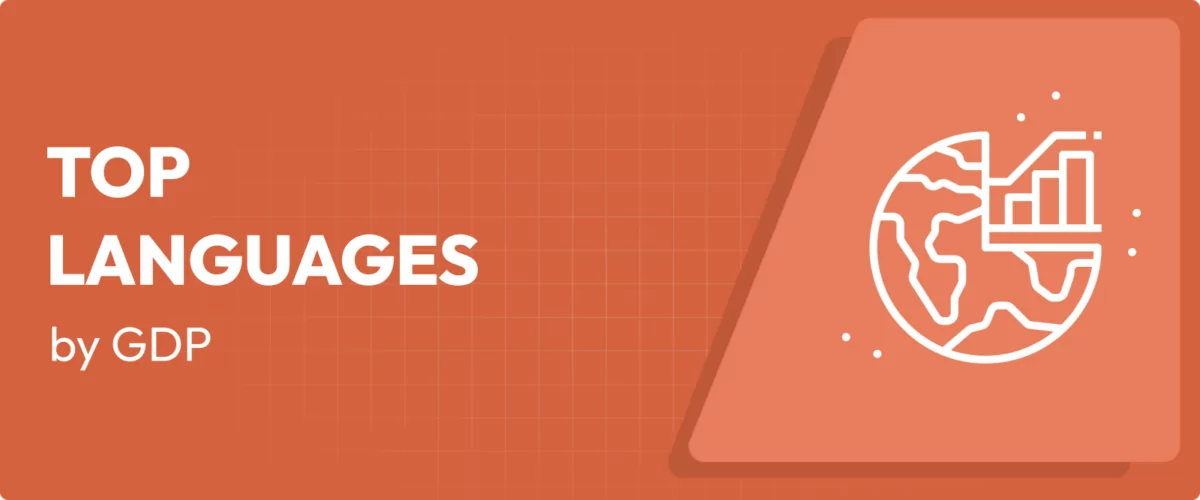
In this post
When picking languages for your multilingual website, there are different ways to go about it. You can choose the most used languages on the Internet, go with your gut, or make a decision based on your visitor and client data. Another way is to choose your site languages by GDP or gross domestic product.
Why should you consider doing that?
Well, the GDP is a measure to describe the market value of all goods and services produced during a specific time frame by a certain entity, usually a country or countries. It’s an indicator of economic health and buying power.
Picking languages for your website by their respective GDP is a way to try and tap into the economy of the people who speak it. The higher the GDP, the better the earning potential for your business. Sounds logical, doesn’t it? So let’s examine if it holds true and if choosing what languages to translate your site into based on language GDP makes sense.
Languages Can Be a Business Asset or Risk Factor
In business, languages matter, especially if you are competing and presenting yourself online. In 1996, an estimated 80 percent of online content was in English. While English is still the most prominent language online, its dominance has significantly declined since then. In 2024, it was more around 54% and other languages have increased in importance.
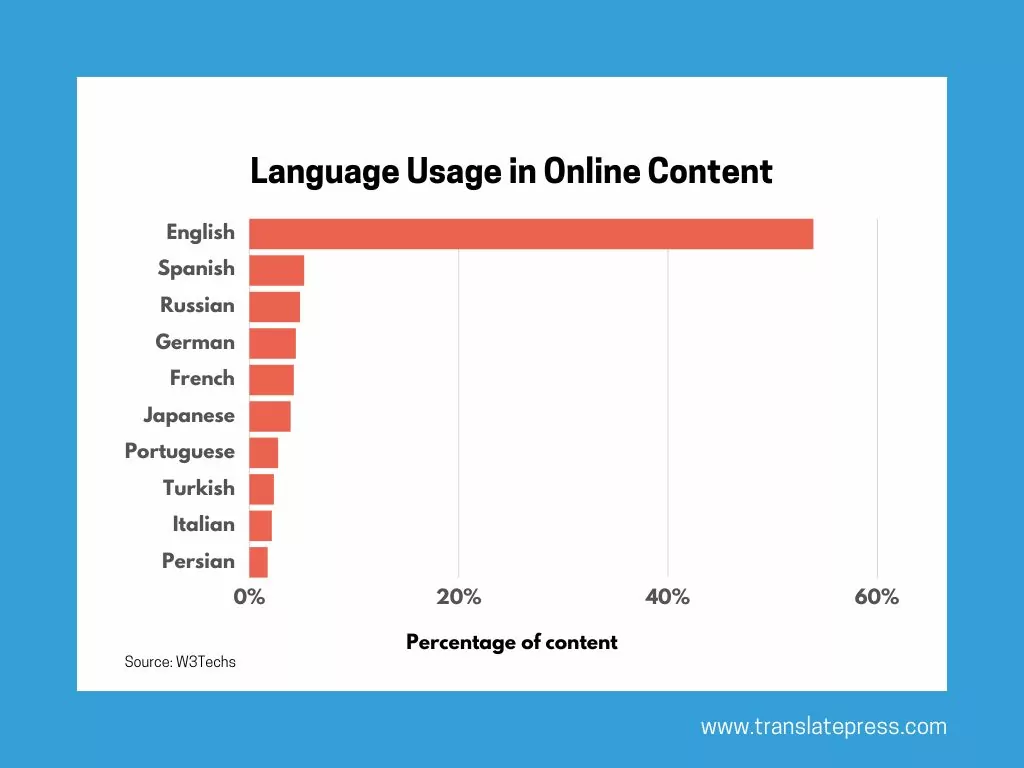
In addition, the above doesn’t take into account the language of the people who actually surf the web. Here, the difference is more pronounced still.
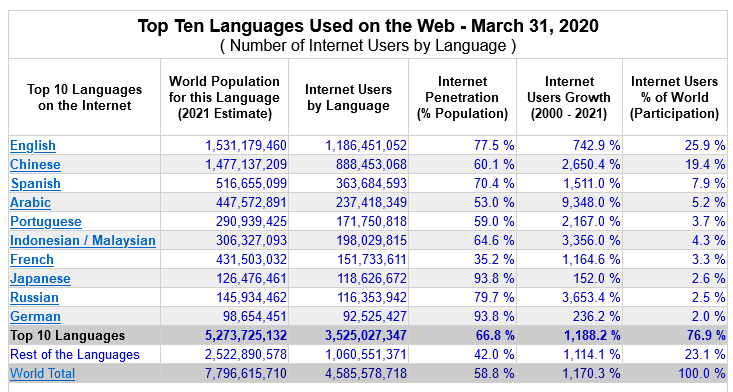
As you can see above, the number of English-speaking Internet users, while still the majority, only makes up about 26% of total users. And those numbers are from 2020. Other languages have likely added a lot more people to their online ranks since then than English did.
Use Multilingualism to Your Advantage
In short, the web has become a lot more linguistically diverse. As a consequence, it makes a lot of sense to offer your website in more than one language. Doing so allows you to reach more people, appeal to a wider audience, and sell across language barriers and borders.
Don’t believe that this could make any difference? According to a 2020 study:
- 75% of consumers want product information in their native language
- 40% won’t buy in another language
- 65% prefer content in their native language
- 73% want reviews of products in their own language
So, as you can see, the language that you offer on your website can very well have a big impact on your business. Therefore, you definitely want to speak the language of those people who might be interested in your offers.
However, at the same time, you also want to appeal to people who have the means to purchase your products. For that, it also makes sense to look at languages in terms of economic possibilities. So, let’s do exactly that now.
Business Languages of the Future, Ordered By GDP
Now that we know why it’s a good idea to offer your website in more than one language, which should you choose based on economic indicators? As mentioned in the introduction, one way to look at it is from the perspective of GDP. It’s a good proxy for how well your language audience earns and their purchasing power.
There is no official government source for this information. However, there are people online who use publicly available data to compile it. The most detailed version I could find was this paper by Konstantin G Filimonov. I’ll be using it as my main source for this post.
According to his writing, these are the top 20 most valuable languages by GDP:
| Rank | Language | Gross Domestic Product (Average 2019-2021) |
| 1 | English | $23.94 trillion |
| 2 | Chinese | $16.54 trillion |
| 3 | Spanish | $6.99 trillion |
| 4 | Japanese | $5.01 trillion |
| 5 | German | $4.91 trillion |
| 6 | French | $3.45 trillion |
| 7 | Arabic | $2.44 trillion |
| 8 | Italian | $2.19 trillion |
| 9 | Portuguese | $1.96 trillion |
| 10 | Korean | $1.86 trillion |
| 11 | Russian | $1.73 trillion |
| 12 | Hindi | $1.37 trillion |
| 13 | Dutch | $1.16 trillion |
| 14 | Turkish | $0.85 trillion |
| 15 | Malay-Indonesian | $0.75 trillion |
| 16 | Bengali | $0.71 trillion |
| 17 | Polish | $0.70 trillion |
| 18 | Swedish | $0.56 trillion |
| 19 | Thai | $0.48 trillion |
| 20 | Farsi | $0.43 trillion |
Here is the same thing again, for the top 10 as a bar graph.
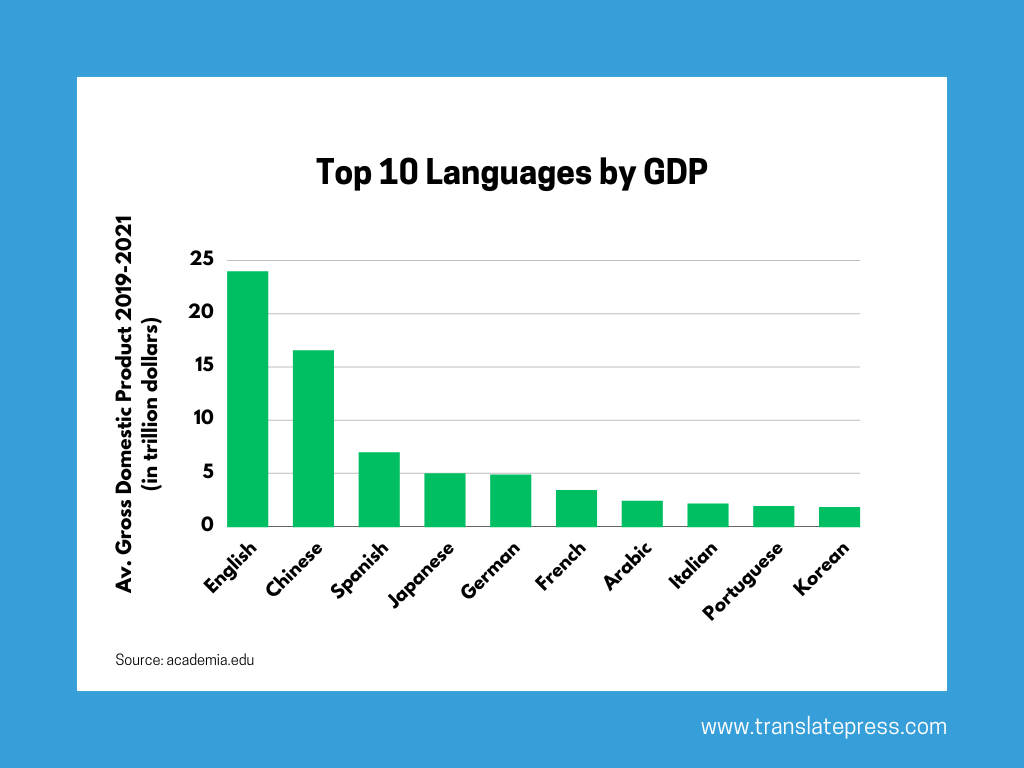
And here is a pie chart showing the share of the top 10 languages in global GDP.
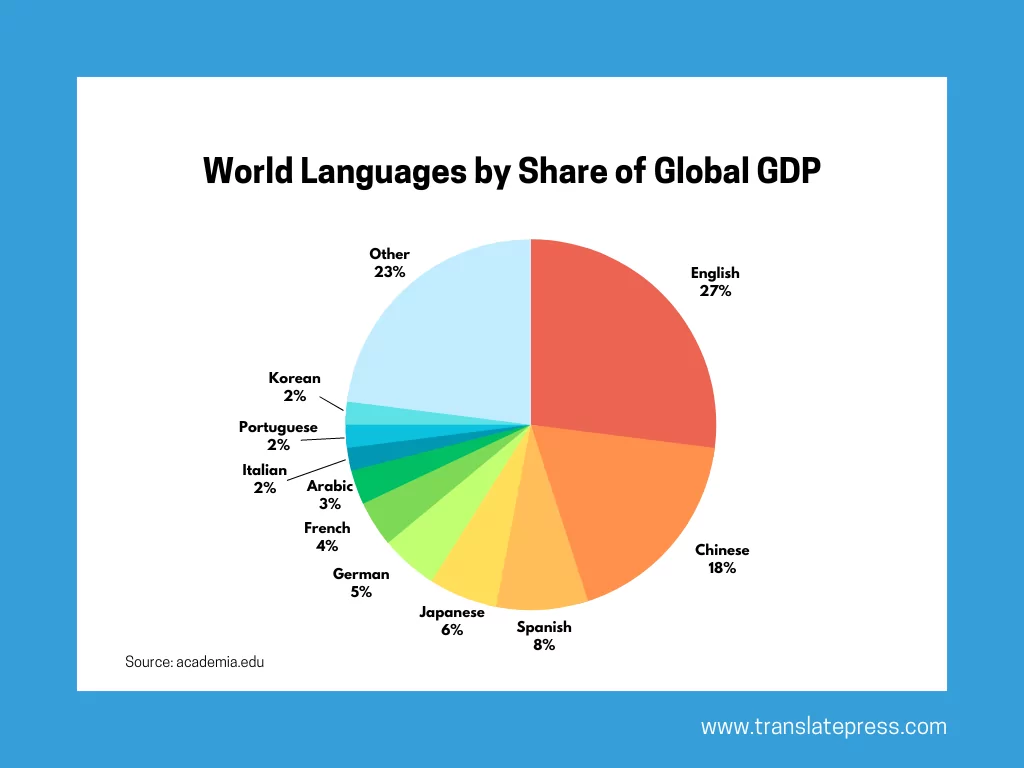
What Can We Learn From Those Numbers?
When you look at the above, there are some things that stand out.
English is at the Top, Again
For one, the fact that English leads the list is probably not super surprising. The group of countries with English as their native language has some of the biggest economies in the world, including the USA, Canada, the UK, and Australia. So, no wonder it leads the pack.
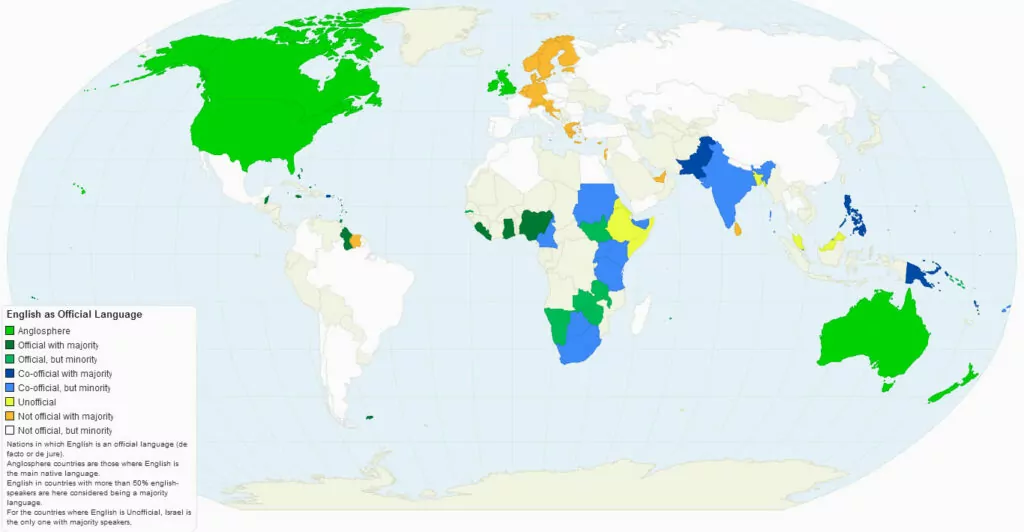
However, keep in mind that the statistics above are for native speakers only. In addition, English is also the first foreign language to learn in many countries. For that reason, the group of total English speakers in the world is much higher, about 1.456 billion. That means, if you consider English as a second or third language, the share of worldwide GDP that it includes is even greater.
Languages Per GDP Reflect the World Economy
Generally, if you think a little about the state of the world economy, the top five or even top ten languages are not all that surprising. If you think about the countries where these languages are spoken, many of them are well known for their economic output. That’s why, the top 10 languages make up 75% of worldwide GDP.
You might wonder why India didn’t make it higher on the list, with its impressive economic growth in recent decades. The fact that the country has several different native languages that need to be accounted for separately always reduces India’s rank in these kinds of lists. If you count all of its main languages together, it would end up ranking much better.
It’s also interesting to see that some languages are quite high on the list that are spoken by a relatively small group of people. Japanese is one such example, as is German, which isn’t even in the top 10 of the most spoken languages worldwide.
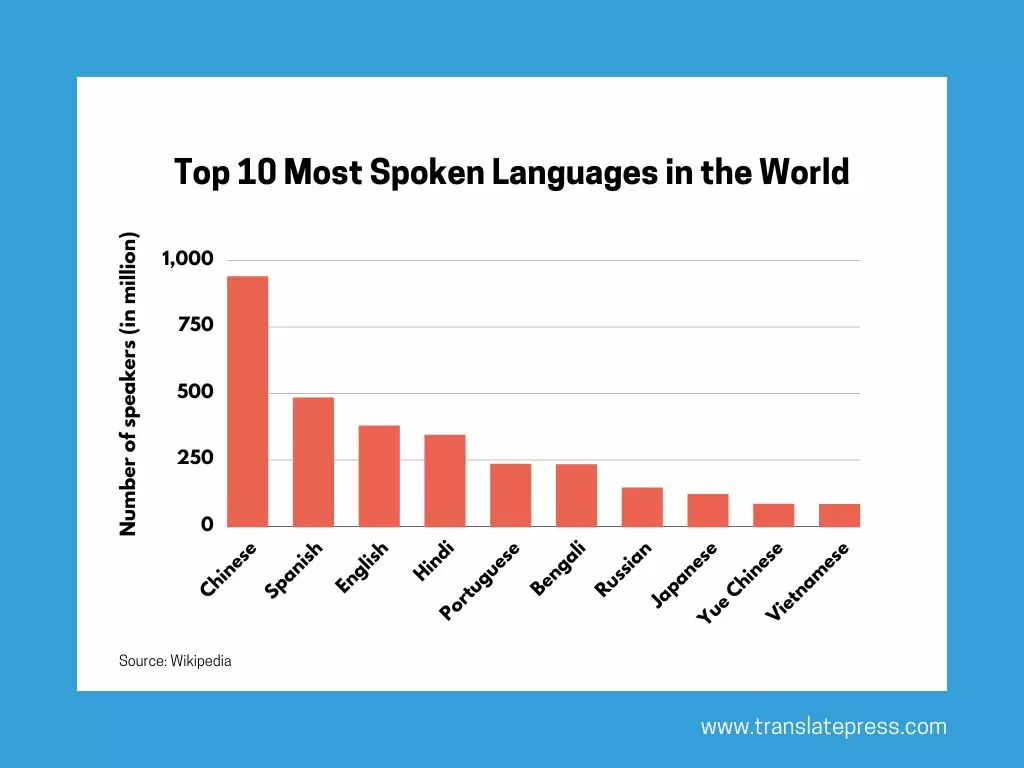
Asian Languages Are on the Rise
Asian countries have been adding Internet users over the last couple of years and still have a ways to go. Their bigger presence online is going hand in hand with stronger GDP growth. Chinese, Hindi, Bengali, Malay-Indonesian, and Thai already show a strong presence in languages by GDP.
If you look at the source for the table above, you can also see that Vietnamese, Punjabi, Javanese, Tagalog, and several other Indian languages and dialects follow in places 20 to 40.
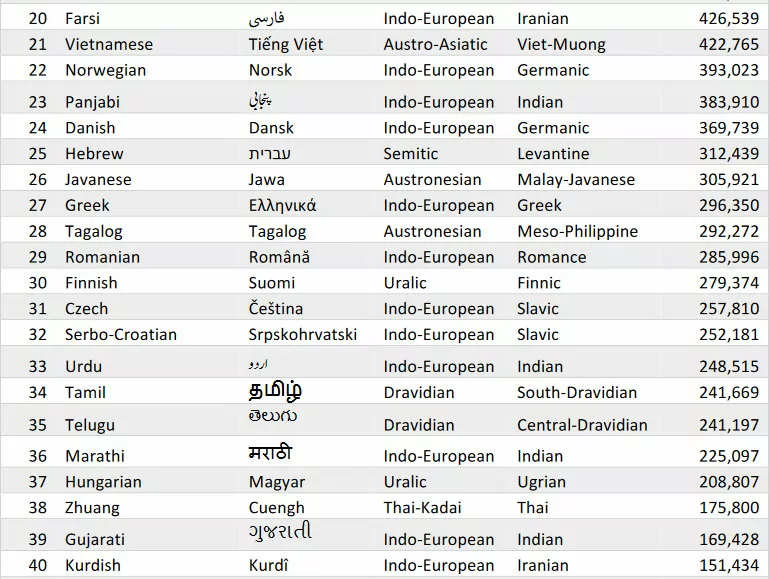
What Does This Mean for Your Website?
Alright, now it’s time to discuss the consequences of this information for your web presence.
Your Website Likely Needs More Than One Language
With the diversification of online languages in general as well as the variety among those with the strongest GDP, offering a multilingual experience for your customer is no longer optional. You very likely already have customers coming to your site who would prefer to consume it in another language.
One of the easiest ways to find that out is to check your web analytics. They can tell you the locations your visitors are coming from as well as the languages they use for their browsers.
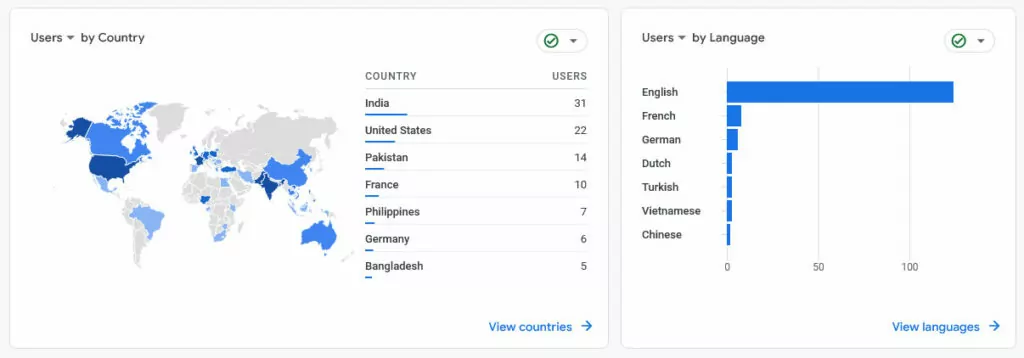
If you at all plan to serve these customers, strongly consider welcoming them linguistically on your website.
English Gives You the Most Bang for Your Buck
Furthermore, if you want to make your website or online shop available to the largest number of additional people, English is the way to go. Due to its widespread use, it allows you to appeal to the largest group of language speakers, not just native speakers. In addition, it allows you to tap into the language with the highest GDP out there, so it’s a double whammy and, therefore, a bit of a no-brainer.
At the same time, the online market in English-speaking countries is a lot more saturated. It has the highest share of people with Internet access, so markets are well-established and harder to break into.
Still, if your website is not already in English, and you want to appeal to a wider but not necessarily specifically local audience, going for English is almost always a good idea.
Adjust the Languages to Your Business Goals
Just because some languages come with a favorable GDP, that doesn’t mean you have to support all of them. Consider what makes sense for your business objectives and markets and make decisions from there.
For example, what countries are you operating in? There is no use offering your website in the language of a country you don’t ship to, no matter how much economic output they show. It would only let you attract people you won’t be able to help in the end.
Another question is, how good is the English education in the market of your choice? If you already offer your website in English and want to serve a locale where people’s skills in this language are excellent, that might be enough. For example, this applies to many Scandinavian and other Western European countries.
Again, look at your customer data and website analytics. See where different language audiences are already coming from and how they behave on your website. Decide from there.
Be Aware of Your Market
There are some special cases of markets where it’s sort of decided for you which languages you definitely have to offer on your website. Several countries have more than one official language. Examples include Switzerland (German, Italian, French, Romansh), Spain (Spanish, Catalan, Basque, Galician), but also South Africa, Canada, and Belgium.
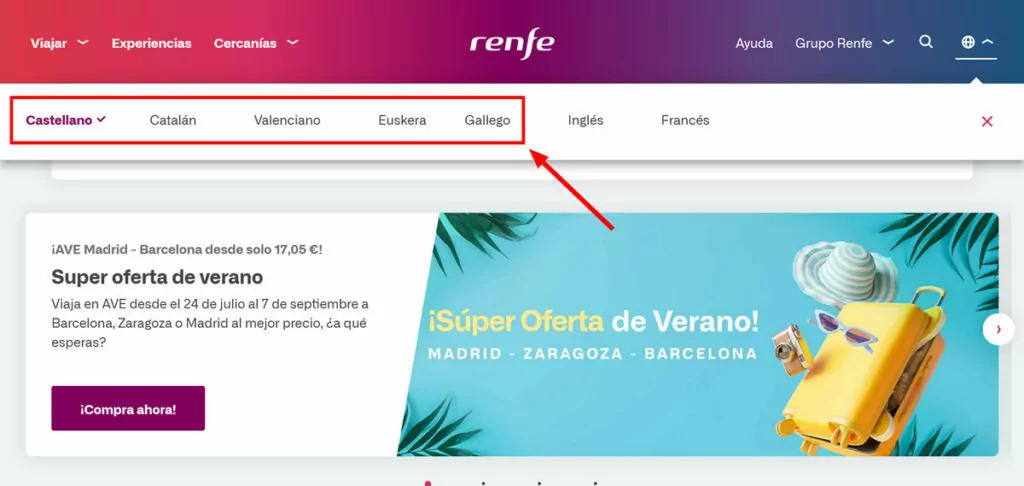
So, if you are in one of those markets, some choices will basically be made for you.
However, adding languages for your market can also be a strategic decision. For example, if your business operates near the border of a neighboring country and you regularly have economic tourists coming over that way, localizing your online offer for this target group can make a lot of sense. That way, you have a higher chance to show up for search queries when they plan their trip.
Use TranslatePress to Translate Your Website Into the Most Profitable Business Languages
Looking at languages by GDP is a good start when considering what to translate your website into. Once you have made a decision, however, you should make adding them to your WordPress site as easy as possible. To facilitate this, at this point, we want to humbly suggest using TranslatePress for that purpose. Here is why.
A Single, Easy-to-Use Interface
In TranslatePress, most translations happen in the same easy interface.
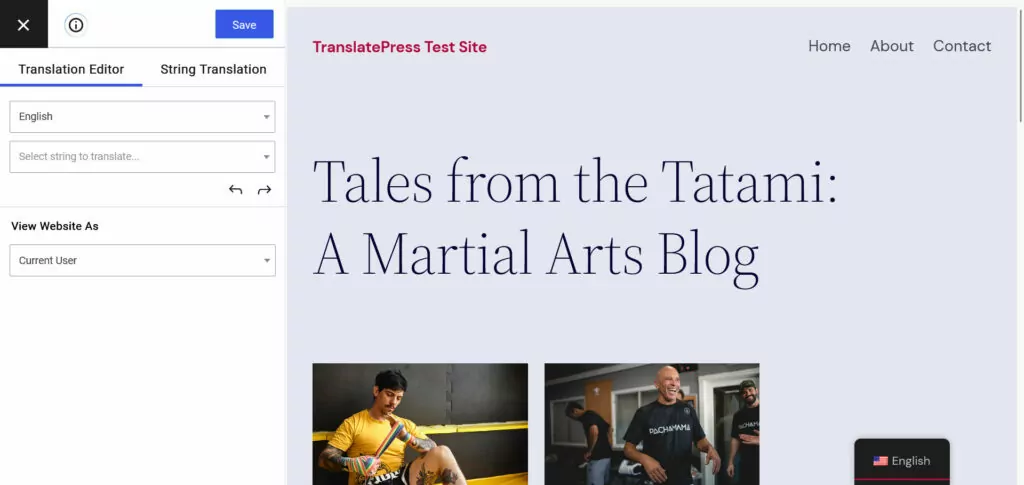
Use the preview on the right to navigate to the page you want to convert to another language. After that, you can choose any of the strings on it either via the drop-down menu, left and right arrows, or directly from the page.
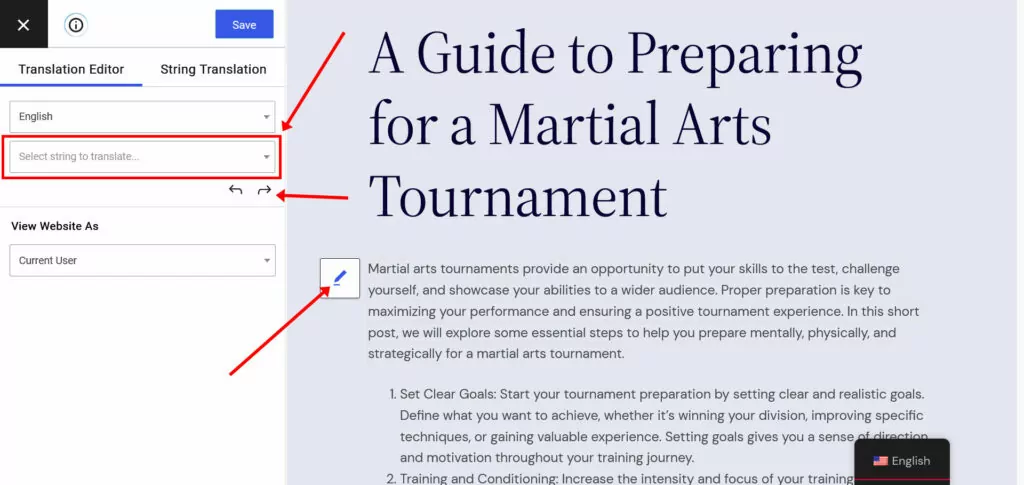
Doing so opens up a new text box on the left side of the screen to add your translation to. When you are done, simply click the Save button to make the translated text appear on your website.
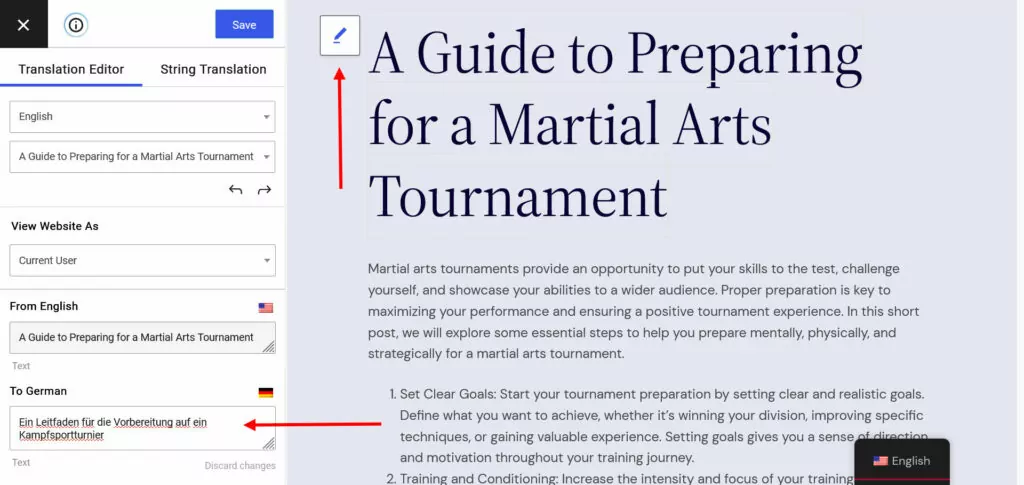
Translate Images in Addition to Text
TranslatePress also allows you to localize your images. This is especially important if your visuals contain text that needs translation. Besides that, it can also make sense to use different images for different regions in order to be more culturally appropriate.

Either way, you can simply select an image for translation from the TranslatePress interface and then provide an alternative on the left. It will appear automatically in the same way as translated text.
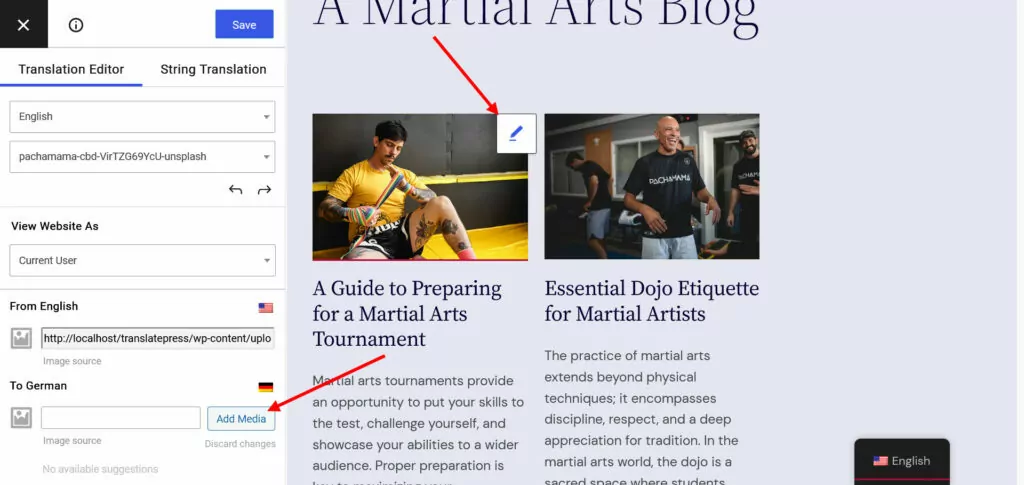
Use Automatic Translation to Save Time, Money, and Effort
TranslatePress offers automatic translations via TranslatePress AI or Google Translate and DeepL APIs. Switch it on under Settings → TranslatePress → Automatic Translation.
Note: With TranslatePress AI, you don’t have to struggle with API generation and setup. Simply activate your TranslatePress license, choose your languages, and enable automatic translation, as shown below.
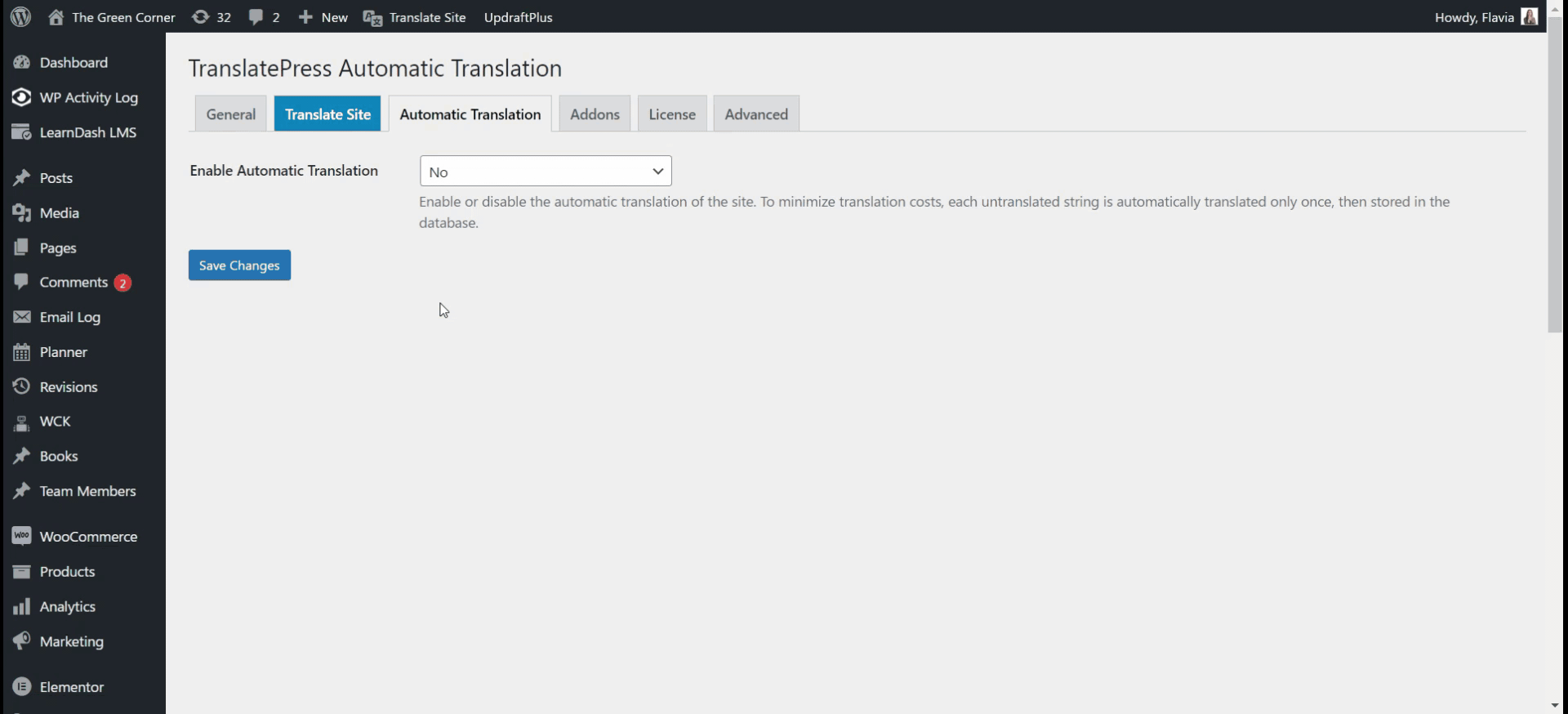
With automatic translation enabled, when you choose a string from the interface, you will automatically find its translation in the respective field.

Multilingual SEO for Search Engine Success
Finally, TranslatePress comes with a multilingual SEO pack in the premium version. It allows you to translate your page links, SEO titles, meta descriptions, ALT tags, and other important SEO markers.
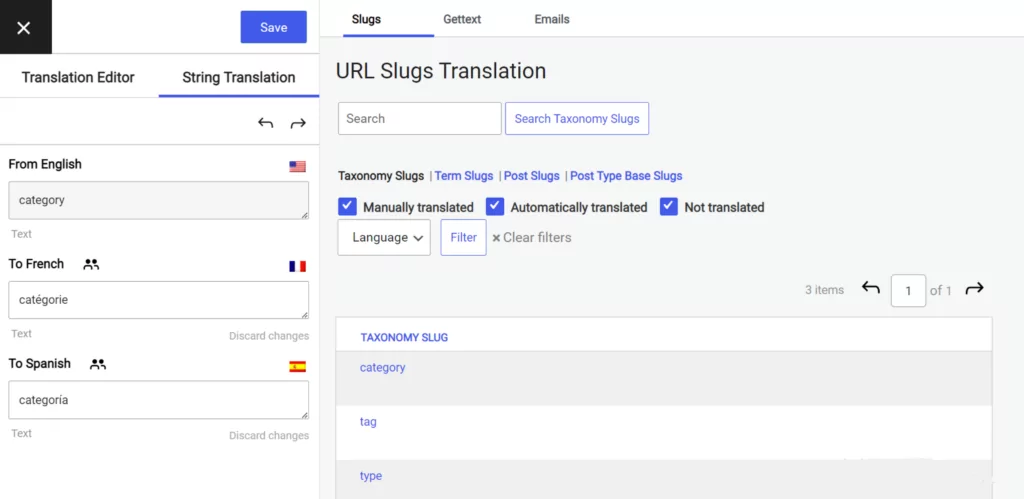
The SEO Pack also creates multilingual sitemaps to submit to search engines. Plus, it works with most of the popular WordPress SEO plugins.
What Will Be Your Website’s Most Valuable Business Language?
Looking at languages by GDP gives you another perspective on which languages to add to your multilingual website. Taking into account the economic power of your target audience definitely makes sense when trying to run a business.
English is probably a good choice in most cases, both for economic reasons as well as for its status as the universal language. After that, you need to think through your business goals, market, and the type of business you are running. Maybe getting in on emerging markets in Asia is a move that would work, maybe focusing on a local language is a better idea.
Whatever you decide, adding more languages to your business website is most likely a good idea. Once you have settled on your choices, consider TranslatePress to implement them.
TranslatePress Multilingual
Were you surprised by the list of languages by GDP above? Any language you were expecting to see or not? Let us know in the comments!
